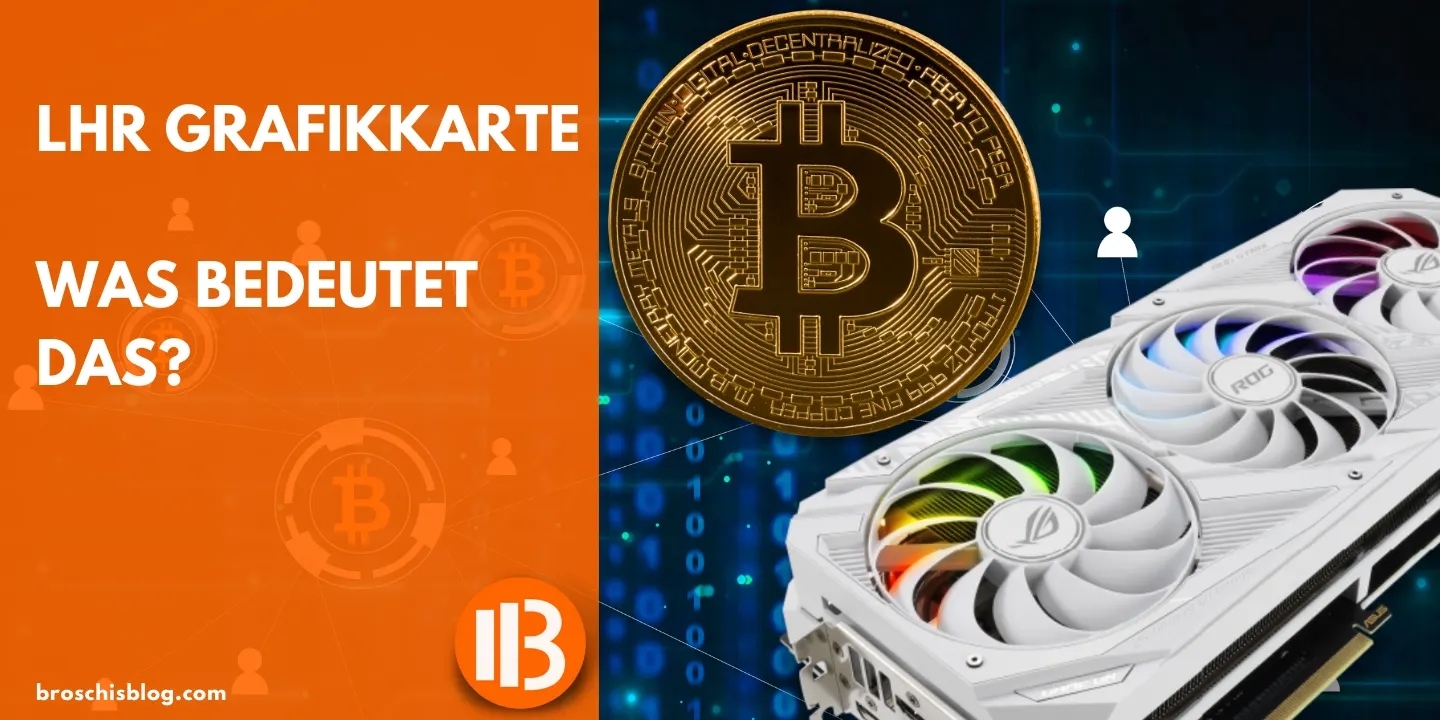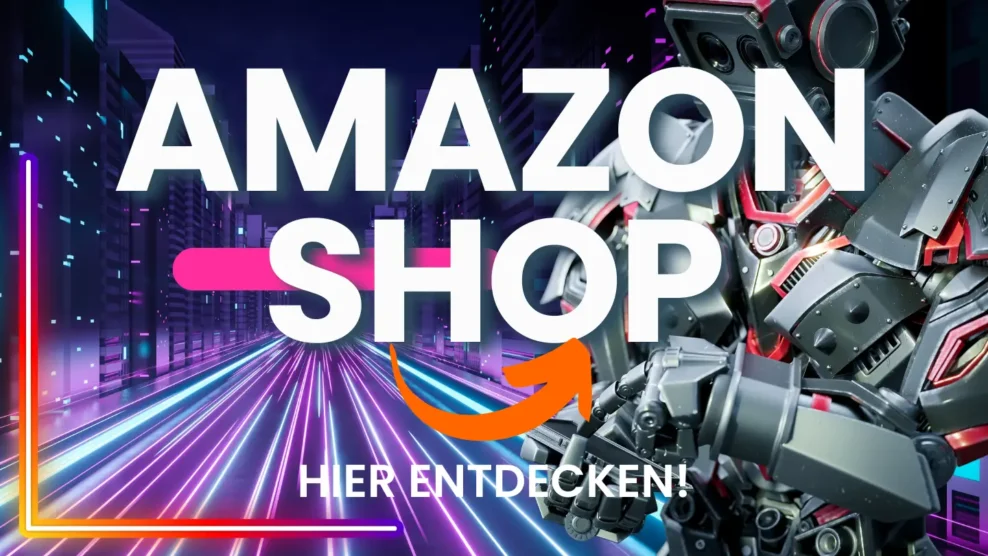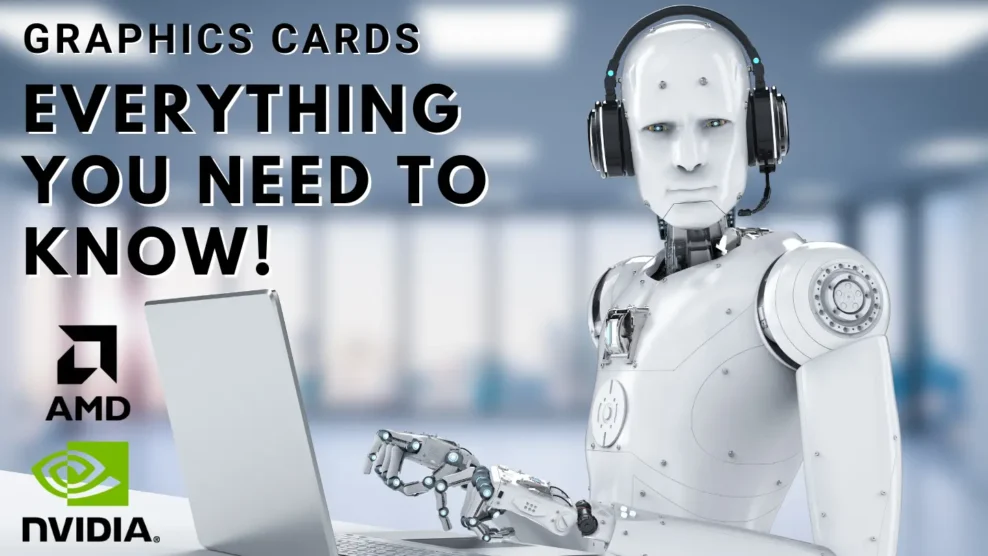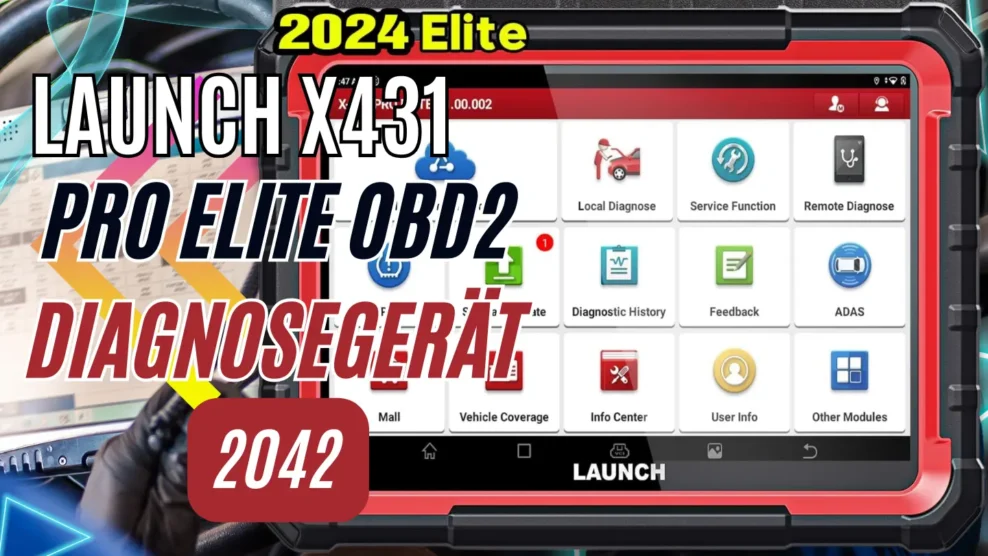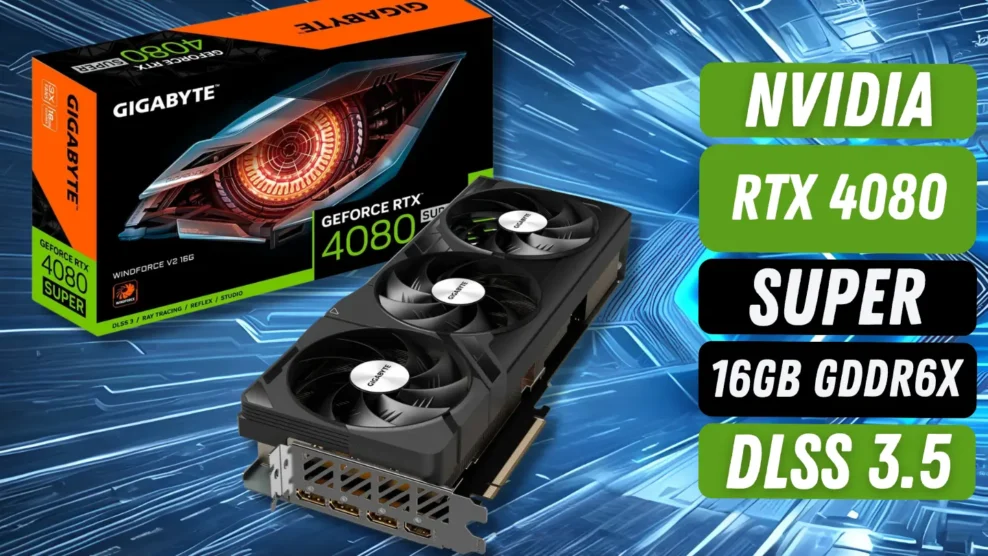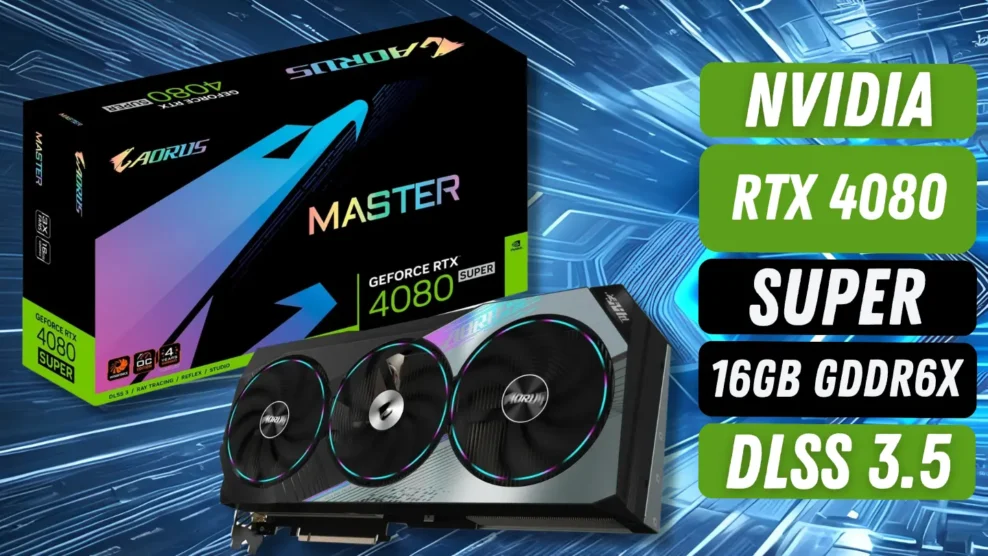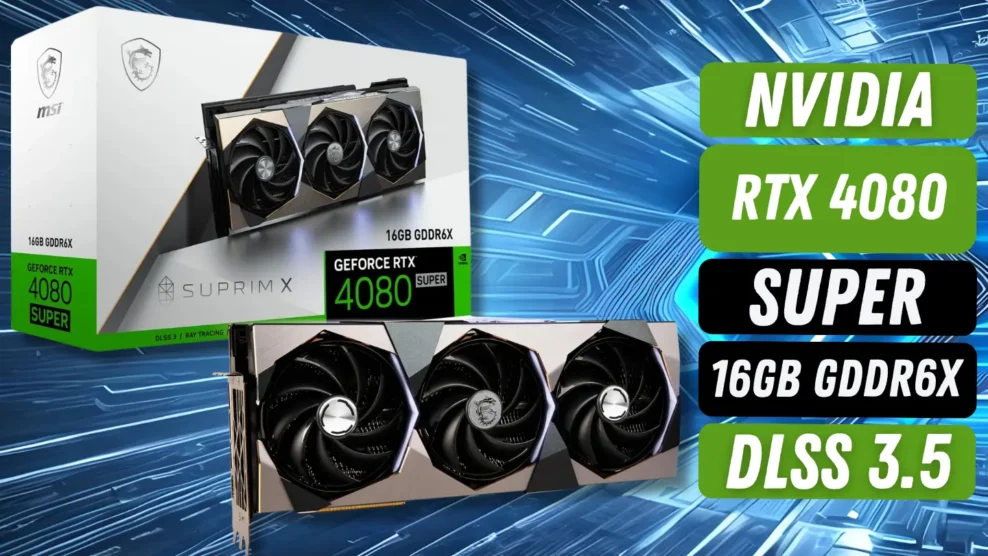Guide: LHR Graphics Cards - The Technology Behind Lite Hash Rate
In the vast plains of technological innovation, a new term has emerged in the world of graphics cards: LHR graphics cards. This abbreviation stands for “Lite Hash Rate” and conceals an innovative technology that not only has the potential to revolutionize the market but also to strike a balance between different user groups. In this text, we will delve into the fascinating world of LHR technology, decrypt its functioning, and shed light on its impact on the market.
The Background of LHR Graphics Cards
The introduction of cryptocurrencies has not only influenced the financial world but also the realm of computer hardware, especially graphics cards. Cryptocurrency mining, the process of processing and validating crypto transactions, requires significant computational power. Since graphics cards offer high parallel processing capabilities, they became preferred tools for crypto miners. This led to an unexpected side effect – massive demand for graphics cards that exceeded supply and drove prices up.
As a result, gamers and other users reliant on powerful graphics cards faced shortages. Graphics card availability became scarce, and those that were available were sold at inflated prices. This market imbalance caused frustration and dissatisfaction among many consumers.
In response to this situation, graphics card manufacturers developed the technology of “Lite Hash Rate” (LHR) graphics cards. The idea behind LHR graphics cards is to reduce the efficiency of graphics cards in crypto mining without affecting performance in other applications. This is achieved by limiting the graphics card’s ability to compute hashes for mining.
So, the background of LHR graphics cards lies in the need to strike a balance between different user groups. Crypto miners should have fewer incentives to acquire large quantities of graphics cards for mining since the efficiency of these cards in this area is reduced. At the same time, the graphics cards remain nearly unchanged in terms of performance for other uses, such as gaming or content creation.
This technology aims to make the graphics card market more stable and ensure that various user groups have access to the graphics cards they need. While the introduction of LHR graphics cards has been controversial, as some crypto miners have to accept losses in mining efficiency, it nonetheless demonstrates how the industry is attempting to respond to the challenges of a rapidly changing market.
The Introduction of LHR Technology
The introduction of Lite Hash Rate (LHR) technology into the world of graphics cards was a response to the pressing challenges arising from the rise of crypto mining. Crypto mining, the process of computing cryptocurrencies like Bitcoin and Ethereum, requires massive computational power primarily provided by graphics cards. This led to an increase in demand for powerful GPUs and a resulting shortage in the graphics card market.
The main motivation behind the introduction of LHR technology was to ensure the availability of graphics cards for different user groups. In response to the massive surge in mining demand, gamers and other traditional graphics card users began to suffer from shortages and inflated prices. LHR technology aimed to address this issue by selectively reducing the efficiency of graphics cards in crypto mining.
The functioning of LHR technology is based on throttling the hash rate, which determines the speed of computations in crypto mining. By limiting the hash rate for mining tasks, the efficiency of graphics cards in mining is reduced, while their performance in other applications such as gaming, video processing, and content creation remains largely unaffected.
The introduction of LHR technology had immediate impacts on the graphics card market. Crypto miners seeking high-performance GPUs for mining had to contend with the limitations of LHR graphics cards. At the same time, the reduced mining efficiency resulted in more graphics cards becoming available for gamers and other user groups, leading to some relief in the market.
However, the introduction of LHR technology also sparked discussions. Some crypto miners criticized the technology as an infringement on their freedom to use the performance of their purchased hardware as they see fit. Nevertheless, the introduction of LHR technology was a step towards maintaining a balance between the interests of different user groups.
Overall, the introduction of LHR technology highlights the dynamics and complexity of the graphics card market. It is an example of how technological developments can have significant impacts not only on a technical level but also on economic and social levels. While LHR technology may be controversial, it represents an attempt to respond to the challenges of a changing market and promote balanced usage of graphics cards.
How Does LHR Work? - The Technology Behind Lite Hash Rate
The functionality of Lite Hash Rate (LHR) technology is essential to understand how it selectively reduces the efficiency of graphics cards in crypto mining while leaving their performance in other applications practically unchanged.
LHR technology aims to limit the hash rate of graphics cards for crypto mining. The hash rate is the speed at which a graphics card performs complex calculations to mine cryptocurrencies. By reducing the hash rate, the efficiency of the graphics card in mining is restricted without significantly affecting its overall performance.
This targeted reduction of the hash rate is achieved through changes in the hardware design of the graphics card and/or adjustments to the firmware. Essentially, it acts as a kind of artificial brake specifically designed for the mining performance of the graphics card.
Reducing the hash rate has no impact on the overall performance of the graphics card in other applications. Gamers and users who utilize graphics cards for tasks like content creation, video processing, and graphic design will hardly notice any difference in performance. This is because these applications rely less on the hash rate.
LHR technology is based on the understanding that crypto mining heavily depends on the hash rate, while other applications have more diverse requirements. By reducing the hash rate for mining, the incentive for crypto miners to acquire these graphics cards in large quantities is diminished. At the same time, the availability of graphics cards for other user groups is increased as the demand from crypto miners is dampened.
The introduction of LHR technology has elicited mixed reactions due to its targeted functionality. Some crypto miners view it as a hindrance because it restricts mining efficiency. However, the technology has been welcomed as a solution to stabilize the graphics card market and expand the availability of graphics cards for different user groups.
Overall, the functionality of LHR technology demonstrates how the graphics card industry strives to respond to the changing needs and challenges of the market. It underscores the complexity of interests inherent in this ecosystem and how technological adjustments are necessary to promote balanced usage of graphics cards.
The Benefits of LHR Graphics Cards
The introduction of Lite Hash Rate (LHR) technology has brought a number of benefits that restore balance in the graphics card market and positively impact various user groups.
- Increased availability for gamers: One of the main advantages of LHR graphics cards is the increased availability for gamers and other users who utilize graphics cards for gaming, content creation, and other applications. Since the mining efficiency of these cards is reduced, they become less attractive to crypto miners. This leads to more of these graphics cards being available in the market.
- Price stabilization: The scarcity of graphics cards and high demand have led to inflated prices. With the introduction of LHR graphics cards, the dynamics of the market have changed. The increased availability of these cards can help stabilize prices and offer consumers fair prices.
- Fairer distribution: LHR graphics cards contribute to more equitable distribution of hardware. Crypto miners who have acquired large quantities of graphics cards for mining are faced with reduced mining efficiency. At the same time, gamers and other users who previously had difficulty finding affordable graphics cards benefit.
- Long-term sustainability: The introduction of LHR graphics cards could also contribute to promoting the long-term sustainability of the graphics card industry. As graphics card manufacturers strive to support balanced usage of their products, this could lead to a healthier and more sustainable market.
- Innovation: The need to respond to market challenges has led to innovations. The development of LHR technology demonstrates how the industry is striving to find new solutions that address the needs of a wide range of users.
- Long-term market success: By expanding the user base and stabilizing prices, the graphics card industry could benefit from a more balanced and healthier market in the long term.
The benefits of LHR graphics cards demonstrate how this technology is a response to the changing needs of the graphics card market. It seeks to restore the balance between crypto miners and other user groups and promote sustainable use of graphics cards. While the introduction of LHR graphics cards is not without controversy, it indicates a broader perspective where the interests of all users are considered.
The Limits of LHR Graphics Cards
While Lite Hash Rate (LHR) technology brings benefits, there are also some limitations and potential drawbacks to consider:
- Limitation of mining efficiency: The primary purpose of LHR graphics cards is to reduce mining efficiency. This can be frustrating for crypto miners who rely on high hash rates. While gamers and other users benefit from this reduction, it may be less attractive for mining operations.
- Technological circumvention: Crypto miners are known to seek ways to bypass the performance limitations of LHR graphics cards. This could lead to a cat-and-mouse game between manufacturers and miners, potentially compromising the effectiveness of the technology.
- Potential market weakening: While LHR graphics cards help increase availability for gamers, the reduced mining efficiency could also lead to a decline in demand from mining operations. This could impact the overall graphics card market as demand for specific models decreases.
- Controversies and acceptance: The introduction of LHR graphics cards has sparked controversy, as some crypto miners perceive the limitations as disproportionate. Acceptance of the technology among different user groups may be uneven.
- Future adjustments: The graphics card industry is constantly evolving. It’s possible that future developments could bring forth new technologies or approaches that may alter or replace the role of LHR graphics cards.
Overall, the limitations of LHR graphics cards are an important aspect to consider when evaluating this technology. While the benefits are evident, it’s crucial to keep potential challenges and drawbacks in mind. The industry is likely to continue making innovations and adjustments to respond to the changing needs of the market.
The Mechanism Behind LHR
The technology of Lite Hash Rate (LHR) graphics cards is based on a specific mechanism aimed at deliberately limiting mining efficiency. This mechanism is crucial for the functioning of LHR graphics cards and influences how they are utilized in crypto mining.
The core mechanism behind LHR graphics cards involves reducing the hash rate, which is the speed at which a graphics card performs calculations for mining cryptocurrencies. This is achieved through technical changes to the hardware and/or adjustments in the graphics card’s firmware.
An important point of focus is limiting the number of hash operations a graphics card can perform per second. This is often accomplished by adjusting the number of “shaders” or computational units. Shaders are a vital component of graphics cards and play a crucial role in performing calculations required for mining. By reducing the number of shaders, the hash rate is limited, and mining efficiency is decreased.
In addition to hardware adjustments, the firmware of the graphics card can be modified to further reduce the hash rate. This can be done through the implementation of algorithms that throttle mining efficiency. The firmware can also recognize specific mining algorithms and selectively reduce the hash rate for these algorithms.
The mechanism behind LHR graphics cards aims to promote a more balanced use of graphics cards. By restricting mining efficiency, crypto miners are encouraged to diversify their hardware reserves across various graphics card models. This allows other user groups, such as gamers and content creators, better access to graphics cards.
It’s important to note that the mechanism behind LHR graphics cards is not solely based on technical changes but also considers economic considerations. The graphics card industry strives to find a balance between various user interests, and the mechanism behind LHR graphics cards is a strategic response to this challenge.
The Effects on the Market
The introduction of Lite Hash Rate (LHR) graphics cards has had significant impacts on the graphics card market, spanning across various levels. These effects reflect how the graphics card industry is responding to changing user requirements and needs.
- Availability and Prices: One of the most significant impacts of LHR graphics cards pertains to availability and prices. With reduced mining efficiency, these cards are less attractive for crypto miners. This leads to increased availability of graphics cards on the market, which were previously often scarce and expensive. Prices could also be stabilized as demand from crypto miners is dampened.
- Market Balancing: The introduction of LHR graphics cards helps to balance the market. While crypto miners are faced with the restrictions of reduced mining efficiency, gamers and other users benefit from improved availability. This creates a more balanced utilization of graphics cards and reduces tensions in the market.
- Innovation: The need to deliberately reduce mining efficiency has pushed manufacturers to develop innovative solutions. These innovations could also impact other areas of graphics card development, as the industry is constantly looking for new ways to improve performance and efficiency.
- Sustainability: The introduction of LHR graphics cards could contribute to the long-term sustainability of the graphics card market. A more balanced market that considers the needs of different user groups could help protect the industry from excessive volatility.
- Controversies and Discussions: The impacts of LHR graphics cards have sparked controversial discussions. While some see the technology as a step in the right direction to regulate the market, there are also critics who perceive the limitations as disproportionate.
- Future Adjustments: The introduction of LHR graphics cards demonstrates how the graphics card market is constantly evolving and adapting. Future technological developments could bring further adjustments and innovations to respond to the changing needs of the market.
The impacts of LHR graphics cards are diverse and illustrate how the graphics card industry is striving to respond to the challenges of the market. The technology aims to promote a balanced utilization of graphics cards while considering the diversity of user interests.
Challenges and Potential Workarounds
Although the “Lite Hash Rate” (LHR) technology was introduced with the aim of balancing the graphics card market and improving availability for various user groups, there are still challenges and potential workarounds that need to be considered:
Technological Bypass: Some crypto miners are keen on bypassing the performance restrictions of LHR graphics cards. They may seek ways to modify the cards’ firmware or use specialized tools to increase the hash rate. This could lead to an ongoing race between manufacturers and miners, potentially undermining the effectiveness of the LHR technology.
Changing Mining Algorithms: Crypto miners might attempt to switch to mining algorithms that are less dependent on hash rate and thus less affected by LHR restrictions. However, this would require adjustments and could lead to certain cryptocurrencies gaining popularity.
Change in Mining Behavior: Crypto miners might alter their tactics and use multiple graphics card models to maximize mining efficiency. This could involve miners using a combination of LHR graphics cards and unrestricted models to enhance their efficiency.
Shifting Market Conditions: Market conditions are dynamic and can change rapidly. New technologies, regulations, or market developments could impact the effectiveness of LHR technology and potentially introduce new challenges.
Acceptance and Controversies: The introduction of LHR graphics cards has sparked controversial discussions. Some crypto miners may reject the technology or seek alternative approaches to boost mining efficiency.
Complexity of Workarounds: Bypassing LHR restrictions requires technical knowledge and may involve the use of software or hardware. This could be a barrier for some miners.
Despite these potential challenges, it is important to emphasize that LHR technology aims to promote a more balanced use of graphics cards. Although potential workarounds may exist, the technology is a first step towards making the graphics card market more stable and accessible. The industry will continue to strive to develop solutions to address the challenges and maintain the balance between various user interests.
Where can you find an Nvidia LHR graphics card?
Since May 2021, almost all RTX 3000 graphics cards have been converted to LHR. Currently, you can find around 140 graphics cards with LHR here.
Frequently Asked Questions and Answers
Does LHR affect gaming?
Yes, the introduction of “Lite Hash Rate” (LHR) graphics cards definitely has an impact on the gaming industry. These effects can have both positive and negative aspects for gamers.
Positive Impact: LHR graphics cards can positively influence the availability of graphics cards for gamers. Since these cards are less attractive to crypto miners, the scarcity of graphics cards in the market may decrease. This means that gamers may have easier access to graphics cards without having to pay inflated prices.
Example: Suppose you’re an avid gamer who has been searching for a powerful graphics card for your gaming setup for a long time. Before the introduction of LHR graphics cards, these were often hard to come by and priced high. With LHR graphics cards on the market, you might now have a greater selection of available options that could enhance your gaming experience.
Negative Impact: However, the introduction of LHR graphics cards could also lead some crypto miners to seek alternatives to increase their mining efficiency. This could result in increased demand for other graphics card models that are not affected by LHR technology.
Example: Imagine a crypto miner who was accustomed to achieving high hash rates with conventional graphics cards. Due to the reduced mining efficiency of LHR graphics cards, they might seek other means to boost their mining performance. This could lead to increased demand for non-restricted graphics card models that continue to offer high hash rates.
Overall, it can be said that the introduction of LHR graphics cards does have an impact on the gaming industry. However, it’s important to note that the market is complex and the situation could evolve over time. The industry’s response and market conditions will influence how the impact of LHR develops for gamers.
How do I find out if my graphics card has LHR?
How do I find out if my graphics card has LHR?
There are several ways to determine if your graphics card includes the “Lite Hash Rate” (LHR) technology. Here are some steps you can take to find out:
- Check the product description: The easiest method is to check the product description of your graphics card. Often, on the manufacturer’s website or on sales platforms like online stores, you can find detailed information about the graphics card, including any mentions of LHR technology.
- Research the graphics card model: Research the exact model of your graphics card on the internet. You could look for information on whether this model supports LHR technology or not. User forums, technical reviews, and manufacturer specifications can provide helpful information.
- Check for firmware updates: Some manufacturers may release firmware updates for their graphics cards to enable LHR technology. Check the manufacturer’s website for any such updates and whether they are relevant to your graphics card.
- Use manufacturer tools: Some graphics card manufacturers offer special tools or software that provide information about your graphics card. These tools may include details about the technology used.
- Contact support: If you’re still unsure, you can contact the manufacturer’s customer support. They can clarify whether your graphics card includes LHR technology or not.
- Use GPU-Z: You could use the “GPU-Z” tool to obtain detailed information about your graphics card. This tool often displays specific information about the technology used.
Does the RTX 3070 have LHR?
Yes, some models of the NVIDIA GeForce RTX 3070 graphics card have been updated with the “Lite Hash Rate” (LHR) technology. The introduction of LHR to the RTX 3070 aims to reduce mining efficiency and improve the availability of graphics cards for gamers.
However, it’s important to note that not all RTX 3070 models automatically come equipped with LHR. NVIDIA has gradually introduced LHR technology into production. If you’re looking to purchase an RTX 3070, you should carefully check the product description and technical details to determine whether it’s a model with LHR or not.
The implementation of LHR in graphics cards may vary from manufacturer to manufacturer. Some manufacturers may use their own names or designations for this technology. Therefore, it’s advisable to thoroughly review the specific model designation and product information to ensure that you’re getting the desired version of the RTX 3070 with or without LHR.
Are LHR cards slower?
Yes, LHR cards, which are graphics cards with “Lite Hash Rate” technology, typically exhibit reduced mining efficiency, resulting in a lower hash rate during cryptocurrency mining. This attenuation of mining performance was intentionally introduced to make crypto mining less attractive and to improve the availability of graphics cards for other user groups, such as gamers.
However, it’s important to emphasize that the performance losses in LHR graphics cards mainly apply to cryptocurrency mining and, in most cases, have no noticeable impact on other applications such as gaming. For gamers, LHR cards are generally not slower than their predecessors without LHR, as the reduction in mining efficiency has no direct effect on graphics performance in games.
Example: Suppose you own an LHR graphics card and want to use it for gaming. You will likely not notice any significant differences in gaming performance compared to a non-LHR graphics card. The performance of your games is mainly influenced by other factors such as the graphics chip, memory, and drivers.
However, it’s important to check the technical details and product information of the specific graphics card to ensure you select the right card for your requirements. The LHR technology aims to balance the use of graphics cards without negatively impacting gaming performance.
Are LHR cards slower for gaming?
No, LHR cards (Graphics cards with “Lite Hash Rate” technology) are typically not slower for gaming. The introduction of LHR technology aims to reduce mining efficiency for cryptocurrency mining activities without negatively impacting gaming performance.
LHR technology mainly affects the graphics card’s ability to efficiently mine cryptocurrencies by reducing the hash rate for mining tasks. However, this reduction in hash rate does not have a significant impact on the graphics card’s ability to run games at high quality and performance.
Example: Imagine you own an LHR graphics card and want to play current games with high graphics quality. The gaming performance of this card is primarily influenced by factors such as the graphics chip, VRAM capacity, architecture, and drivers. LHR technology does not affect these aspects and therefore does not have a noticeable negative impact on your gaming experience.
It is important to emphasize that LHR technology was developed to increase the availability of graphics cards for gamers without compromising their gaming performance. If you are primarily interested in gaming, LHR cards are a good option to enjoy high gaming performance without experiencing the limitations of mining efficiency.
What does LHR bring?
- Improved availability for gamers: LHR graphics cards are less attractive to crypto miners since their mining efficiency is reduced. This increases the availability of graphics cards for gamers as fewer cards are used for cryptocurrency mining. Gamers have a better chance of finding affordable graphics cards without having to pay inflated prices.
- Price stabilization: As the demand for graphics cards for crypto mining could decrease, this could lead to stabilization of prices in the graphics card market. Excessive demand from miners has previously led to significant price fluctuations, disadvantaging gamers.
- Focus on gaming: The introduction of LHR promotes a focus on the primary function of graphics cards – gaming. The technology aims to balance the use of graphics cards for their original purpose and support gaming enthusiasts.
- Reduced second-hand mining cards: The introduction of LHR may lead to older mining graphics cards with higher hash rates gradually being replaced by new models with LHR. This could result in fewer mining graphics cards available on the second-hand market, possibly leading to lower prices for gamers.
- Sustainability: Since cryptocurrency mining often involves intensive use of graphics card resources, LHR cards could extend the lifespan of graphics cards. The reduced strain from mining could help increase the longevity of the cards.
What does LHR mean for a graphics card?
In a graphics card, “LHR” stands for “Lite Hash Rate.” The LHR technology was introduced by graphics card manufacturers, particularly NVIDIA, to reduce the efficiency of crypto mining on certain graphics card models.
The introduction of LHR primarily aims to improve the availability of graphics cards for gamers by decreasing the appeal of these cards to crypto miners. This is achieved by restricting the graphics card’s ability to mine cryptocurrencies at a high hash rate. The hash rate refers to the speed at which a graphics card performs cryptographic calculations necessary for mining cryptocurrencies like Ethereum.
The reduction in mining performance on LHR graphics cards means they are less efficient in crypto mining, thus becoming less attractive to miners. This is intended to help reduce the excessive demand for graphics cards from miners and refocus attention on the gaming community.
Example: Suppose you come across a graphics card labeled “RTX 3080 LHR.” In this case, “LHR” indicates that it is a version of the NVIDIA GeForce RTX 3080 where mining efficiency has been reduced. This card is likely to be less appealing to crypto miners while still being an excellent choice for gamers seeking high performance for gaming.
In summary, “LHR” stands for “Lite Hash Rate” and refers to graphics cards where crypto mining efficiency has been reduced to improve the availability of graphics cards for gamers.
Can LHR be bypassed?
There have been attempts to bypass the “Lite Hash Rate” (LHR) technology in graphics cards, but this is not a straightforward process and can come with significant risks. Manufacturers have introduced the LHR technology to reduce mining efficiency and are trying to prevent potential workarounds.
Some tech enthusiasts and crypto miners have tried using modified drivers or BIOS modifications to increase the mining efficiency of LHR graphics cards. However, this can lead to the graphics card being damaged or not functioning at all. Additionally, such bypass attempts may violate the manufacturer’s terms of use and void the warranty of the graphics card.
It’s important to note that bypassing LHR may not only raise ethical concerns but could also have legal consequences. Manufacturers could take measures to detect and block such attempts.
Example: Suppose you own an LHR graphics card and attempt to bypass mining efficiency through modifications. If these modifications are not done properly, they could result in serious damage to your graphics card. Not only could you render the card unusable, but you could also lose your warranty.
It is recommended to accept the LHR technology as introduced and understand its purpose. If you are looking for a graphics card for gaming purposes, LHR graphics cards are still a good choice as they do not impact gaming performance. It’s advisable to engage with graphics cards in a legal and ethical manner and avoid risky attempts to bypass LHR technology.

